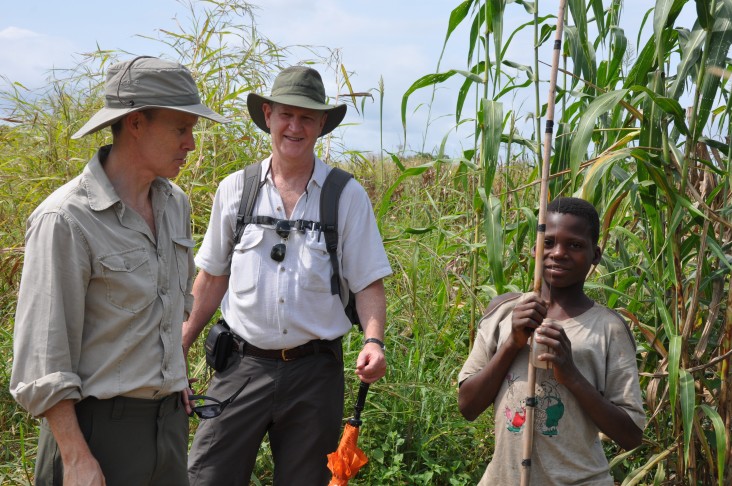
For Immediate Release
U.S. Ambassador to Mozambique, Douglas Griffiths and USAID/Mozambique Mission Director, Alex Dickie, spent some time last week, visiting the Gorongosa National Park at the central Mozambican Province of Sofala. Since 2006 the U.S. Government, through USAID, has joined efforts with the Government of Mozambique and the Carr Foundation in the Gorongosa Restoration Project. The projects envisions a harmonious and mutually beneficial relation between wildlife, flora and the communities of the surrounding areas, by connecting biodiversity conservation with education, health, forestry, agriculture, eco-tourism, natural resource management, and alternative income generating opportunities.
The United States support to the Gorongosa Restoration project includes the construction and maintenance of a Community Education Center where children and adults can come to learn about biodiversity conservation; the design and construction of a wildlife sanctuary and a scientific research center; park operation and maintenance; and research on the rich biodiversity of the park. Furthermore, the project includes many other activities such as the reforestation of Mount Gorongosa, an Eco-Health program and community livelihood projects.
The visit included a stop at one of the buffer zone villages, Vinho, where Ambassador Griffiths and Alex Dickie were able to speak with members of the community and understand how their lives have changed after the revival of the park. They also visited Vinho’s school, the maternity ward and a small market. Ambassador Griffith also interacted with some citizens of the region who were learning about Tuberculosis at the park’s Community Education Center. By knowing more about specific diseases and behaviors they are better prepared to advocate for its testing, treatment and prevention. The Eco-Health project, also funded by USAID, works in areas such as HIV/AIDS, malaria and family planning.
By returning the park to its former glory, including its amazing natural beauty and rich biodiversity, which were devastated during Mozambique's 16 year civil war, the project expects to stimulate private investment in the park. It is clear that the increase of tourism in the park will create more jobs and will channel more funds to the community. At the moment 20 percent of the park’s revenue is transferred to the communities, providing a clear incentive for the population to stop unnecessary deforestation and poaching and encouraging them to engage in more sustainable activities.
During the visit, the team also met with a group of scientists and students from different parts of the world, Mozambique included, who were initiating a multi-year biological survey of Gorongosa’s biodiversity. This survey, partially funded by USAID, is fundamental for the expansion of the Mozambican biodiversity knowledge, but also to promote the development of Mozambican students and research.
Visit our Flickr page for additional photos of this visit, here.







Comment
Make a general inquiry or suggest an improvement.